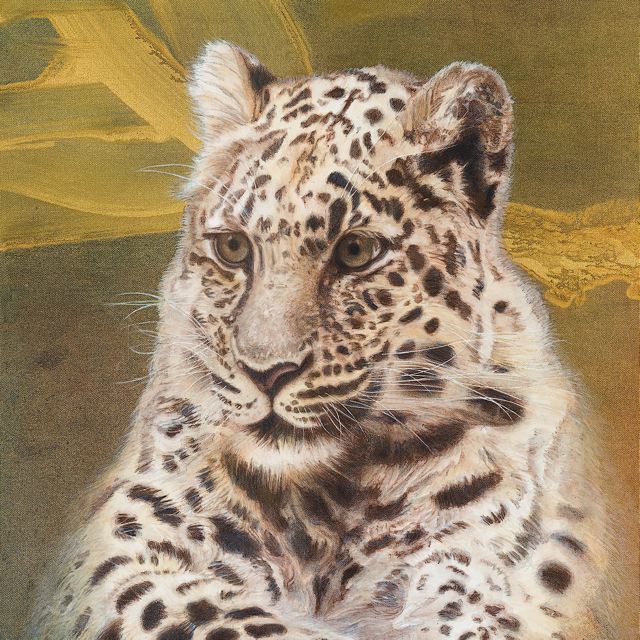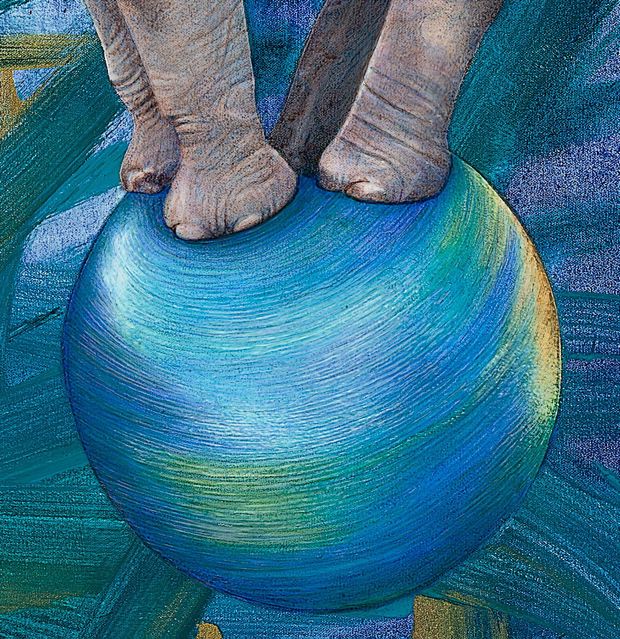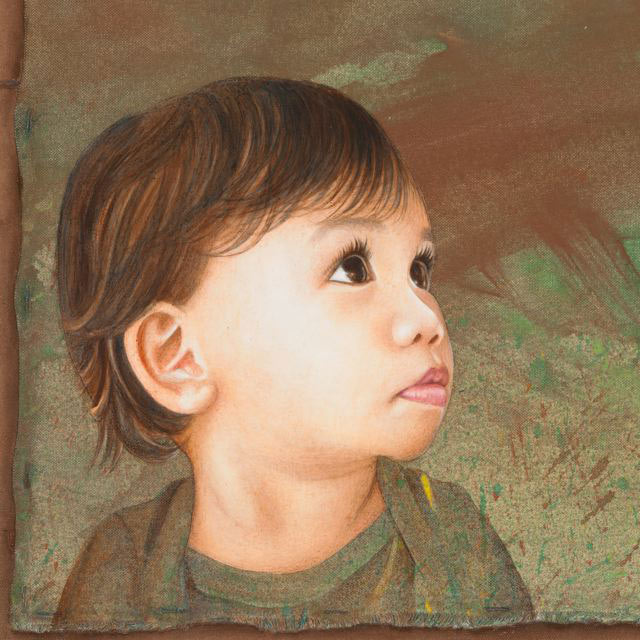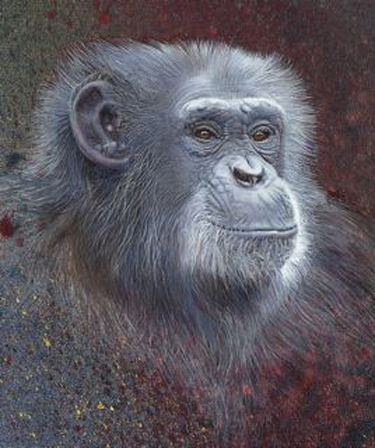Jeb is a zookeeper. He loves his job!
WHY THIS WORK IS IMPORTANT:
Right now a massive extinction of living species is taking place on Earth. This crisis is of an order of magnitude not seen since the disappearance of the dinosaurs 65 million years ago. Scientists believe that this is not an act of nature, but an impending human calamity that can be mitigated. That is both good news and an extraordinary opportunity.
Why is this major extinction event happening?
Famed Harvard biologist, E. O. Wilson uses the acronym HIPPO:
H ~ habitat destruction
I ~ invasive species
P ~ pollution
P ~ over population
O ~ over harvesting, fishing and hunting
According to the best estimates of ongoing biodiversity research, without significant changes in our environmental practices, half of the Earth’s plant and animal species may be driven to extinction or reduced to ‘the living dead’ (critical endangerment) by the end of the century. Paleontologists estimate that the normal rate of extinction is one species per million per year ~ and the creation of new species is the same . (E. O. Wilson).
Today, the extinction rate is 1,000 times the birth rate. Our natural heritage is declining at a precipitous rate. Humans are out-competing every species on this small, finite planet. If unabated, the increasing levels of CO2 in the atmosphere since the Industrial Revolution alone could eliminate a quarter of all surviving species within 50 years. (E. O. Wilson, 2012 talk at the Aspen Environmental Forum)
The most important thing we can do is realize that everything we do matters.
--Jane Goodall
everything we do matters.
The Center for Biological Diversity (CBD) calls ocean acidification, a largely unknown problem, the evil twin of climate change. According to the CBD, an almost unimaginable 22 millions tons of carbon a day is absorbed by the oceans, increasing acidity, one of the gravest threats to marine life. This ‘other CO2 problem’ depletes seawater of the nutrients needed by corals, crabs, seastars, urchins, plankton and pteropods to build their skeletons or shells. Disrupting the base of the food chain degrades the coral reefs, the entire marine ecosystem and the health of the biosphere.
At the top of the food chain, the loss of top predators is having a massive detrimental impact on the health of both terrestrial and marine ecosystems. 90% of all the top marine predators are gone. A 2011 paper in Science magazine claims that the loss of apex consumers from ecosystems “may be humankind’s most pervasive influence on nature.”
The oceans, which cover over two-thirds of our planet, contain over 80% of all life on Earth with a rich biodiversity that is unparalleled on land. We are changing the very chemistry of the sea, and wiping out whole phyla through climate change, air, water and plastics pollution and overfishing with heavy handed techniques like dynamite and cyanide fishing, long line fishing with lines one to 100 miles long and bottom trawling (the world’s most destructive fishing technique). The UN Food and Agriculture Organization estimates that all 17 of the world’s major fisheries operate below sustainable levels: 13 are overfished or fished to capacity, and 4 are depleted.
OUR GOAL IS TO SPARK AWARENESS AND ACTION TO PRESERVE LIFE ON EARTH.
Together we can thrive.
Our task must be to free ourselves by widening our circle of compassion to embrace all living creatures and the whole of nature and its beauty.
—Albert Einstein
Scientists, such as physicist Fritoj Capra and biologist E. O. Wilson, warn that by continuing to disrupt the Earth’s symbiotic living systems, humans place their own survival at great risk.
It is our intention that this pioneering exhibition of art and ecology will touch the hearts and lives of millions of people around the world to inspire action on behalf of all species. Most people have little or no familiarity with the concept and importance of biodiversity, and the fact that the rapid disappearance of species is one of the most destabilizing problems we face.
Each of our choices — from our daily purchases to how we dispose of our waste — has global impact. Everything we think, say and do matters. Scientists, policy makers, and religious leaders agree that it is imperative to educate and energize people to restore health and balance in their own neighborhoods and bioregions in order to forge a healthy future for all. In so doing, we become conscientious stewards rather than consumers.
For positive change to occur we must understand and feel both the loss and the exciting possibility of renewal on a personal level. We can hear about pollution, endangered species and habitat destruction forever, but it has to be personal to be real. Biophilia (a deep innate love of nature) is deeply embedded in our genes, in spite of our simplified, non-nourishing urban/suburban lifestyles and environments. The simple act of walking every day in nature heals most depression. This instinctual connection to the living world is the essence of our human nature. Climate and biodiversity are not our two greatest problems; they are our two greatest gifts. The good news is that when people work with nature to restore environments, actively protect and manage intact ecosystems, conserve resources, employ sustainable energy and agricultural practices and reduce pollution, nature responds in amazing ways on all scales from backyards to communities to ecoregions. That’s definitely good news and an extraordinary opportunity. (See also The Grotto of Hope)
The Rama Exhibition weaves powerful art and hard science with inspiring ideas, and stories of nature’s heroes to motivate each individual to become a steward of life where they live. We have everything we need to restore the living systems that sustain us, and shift to abundant and sustainable lifestyles by broadening our perspectives, taking a long-term view, and going the distance. In so doing, there will be enough noble work to encompass everyone’s energy and creativity. We have an uncommon chance and personal responsibility to work together and dedicate our energy and talents to the common good, such that our personal success and fulfillment derive from this quest. People have a growing desire to have more meaningful and useful lives ~ to make a difference. The Rama Exhibition will provide an experience of hope helping people of all ages envision a vibrant future that holds boundless possibilities for them and our living Earth to flourish. That’s a real win win.
What is required is an act of repentance on our part and a renewed attempt to view ourselves, one another and the world around us within the perspective of the divine design for creation. The problem is not simply economic and technological; it is moral and spiritual. A solution at the economic and technological level can be found only if we undergo in the most radical way an inner change of heart, which can lead to a change in lifestyle and of unsustainable patterns of consumption and production.
--Pope John Paul II and Ecumenical Patriarch Bartholomew,
Joint Declaration on Articulating a Code of Environmental Ethics, 2002
Hope is believing in spite of the evidence.
–Michael Toms, Founder, New Dimensions Internet Radio
A MIGHTY POWER…
A MIGHTIER PURPOSE
An International Traveling Exhibition of Endangered Species
Dedicated to the Children of the World by Calley O'Neill with Rama the Elephant
AN EPIC JOURNEY OF ART AND SOUL FOR THE EARTH
RAMA: AMBASSADOR FOR THE ENDANGERED ONES
Artists Speaking Passionately on Behalf of Those who Cannot Speak








